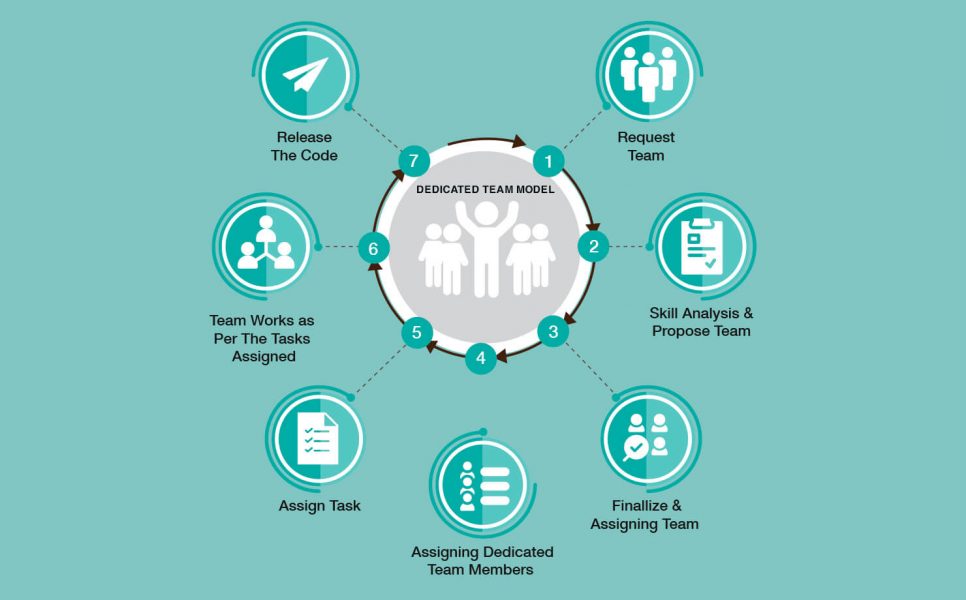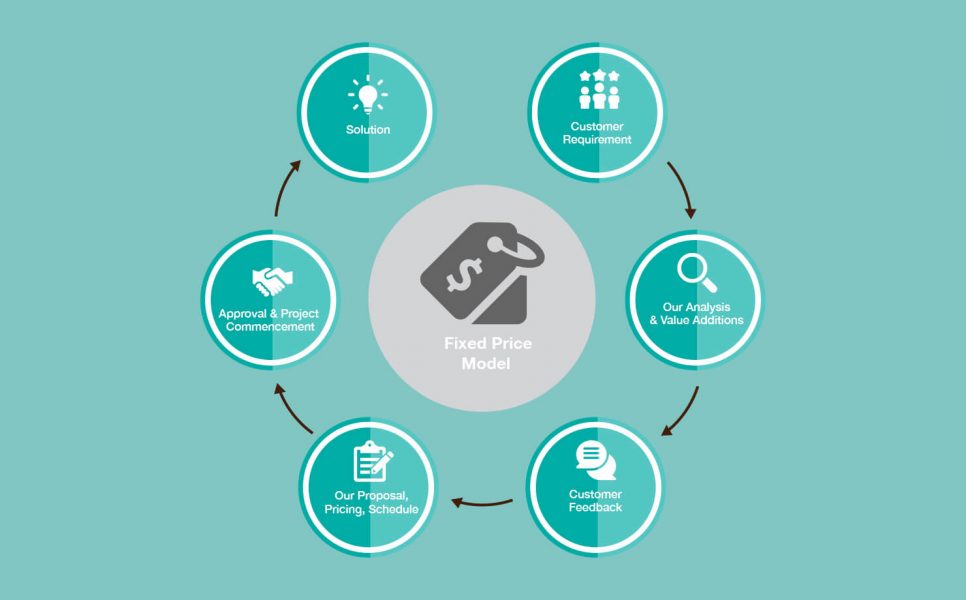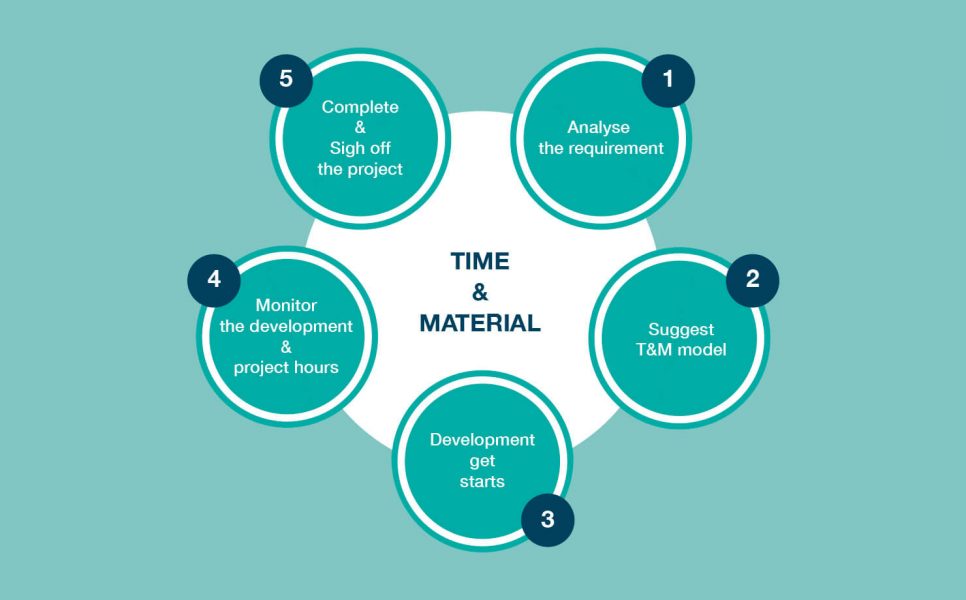Every new startup wants to know what will help to reach the best results in outsourcing collaboration. It seeks for a company to satisfy their project needs with competencies but often forgets to pay attention to the proper IT outsourcing model choice. It’s not a wonder that a project developed according to the model, which doesn’t fully meet its objectives, struggles with inefficient management. To build a strong partnership with the vendor resulting in a stable successful product one should know what types of outsourcing exist and what are the criteria to choose one or another type for your project.
3 types of outsourcing engagement models
There are three main outsourcing model types commonly used in projects. Carefully review their features to understand which model best suits your project.
Dedicated Team
 Dedicated development has different other names such as outstaffing or staff augmentation, but the principle of these models is pretty the same: a vendor provides an additional workforce to the client’s project on demand. This can include both tech experts of different levels and non-tech specialists. In such a scheme, you will be able to:
Dedicated development has different other names such as outstaffing or staff augmentation, but the principle of these models is pretty the same: a vendor provides an additional workforce to the client’s project on demand. This can include both tech experts of different levels and non-tech specialists. In such a scheme, you will be able to:
- Build a team according to your specific requirements. You can hire a strong team of Senior developers or choose Middle / Junior developers to fulfill your project team. The model takes all your preferences into account.
- Use the benefit of long-term cooperation. The specialists provided by the vendor become closely integrated into your project, that’s why they acquire deep expertise in your company’s domain. That means they know what they do and save you time and money on project handling.
- Low cost of talent acquisition. If you hire developers from the market, you need to run a recruiting campaign, lose time on testing candidates, their adaptation, and handle the risks of the recruitment. With a dedicated application development model, you get the necessary experts easily and quickly.
Fixed Price
 Among the other types of outsourcing, the fixed price is primarily used when the client has some budget restriction. It helps to define the project budget once and for all and eliminate the hidden costs. The first step to implement this model is to develop business requirements and estimating the project. After this stage, the vendor provides you the price that won’t be changed if only you don’t modify the list of the features. If you are satisfied with the price, the development team provided by the outsourcing company starts working on your project’s implementation. As you see, this model is advisable to apply only if you have stable requirements. If not, you would better consider other options.
Among the other types of outsourcing, the fixed price is primarily used when the client has some budget restriction. It helps to define the project budget once and for all and eliminate the hidden costs. The first step to implement this model is to develop business requirements and estimating the project. After this stage, the vendor provides you the price that won’t be changed if only you don’t modify the list of the features. If you are satisfied with the price, the development team provided by the outsourcing company starts working on your project’s implementation. As you see, this model is advisable to apply only if you have stable requirements. If not, you would better consider other options.
Dos:
- Clear project scope
- The funding risks are minimized
- You don’t need to hire professionals and manage resources
Donts:
- Flexibility is excluded
If you still don’t see any reasonable option for you, look at the last model.
Time & Material Model (Pay-As-You-Go)
 This model envisages the best flexibility for your project. It is applicable for the most unstable projects where the requirements are changed on the go. The team is composed in the way that allows to add or exclude members during the project development. When it’s necessary to have more software developers at the project you can add team members. If, on the contrary, it turns out some members are redundant, you can exclude them or replace with the specialists of the other sphere like analysts, managers, etc.
This model envisages the best flexibility for your project. It is applicable for the most unstable projects where the requirements are changed on the go. The team is composed in the way that allows to add or exclude members during the project development. When it’s necessary to have more software developers at the project you can add team members. If, on the contrary, it turns out some members are redundant, you can exclude them or replace with the specialists of the other sphere like analysts, managers, etc.
In this case, your project budget will consist of only the resources you actually spend on its implementation. If you need 5 developers, you pay them an hourly rate and keep going, if you needed 5 developers before but now you need less, you can scale the team and don’t pay for the downtime. The same concerns the other resources required for the project – you pay only for the time and materials spent. In the whole, we can say that among other types of outsourcing, this one is the most cost-efficient though it doesn’t have a fully defined scope of work and can’t guarantee the budget will be the same if you change the requirements.
Dos:
- Outstanding flexibility
- Cost efficiency
Donts:
- The budget has strict limitations
Let's discuss which IT outsourcing trends will change the industry.
Need a qualified team?
Own the dedicated development team of professionals exclusively for your project.







